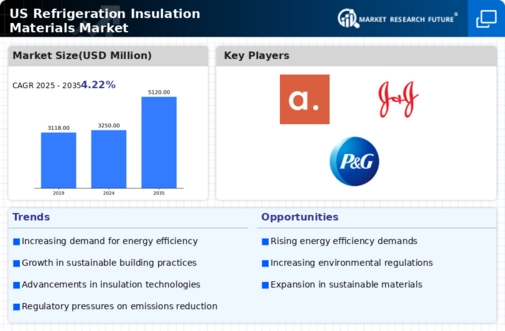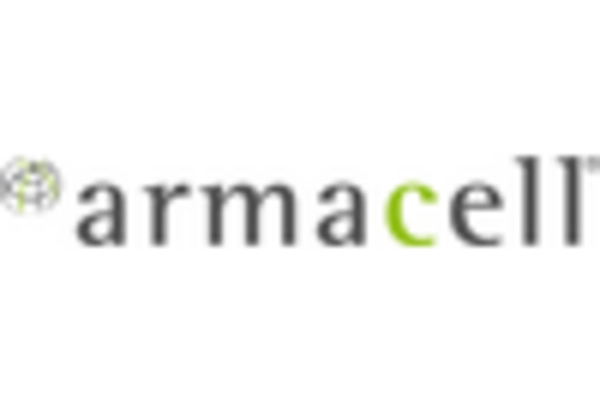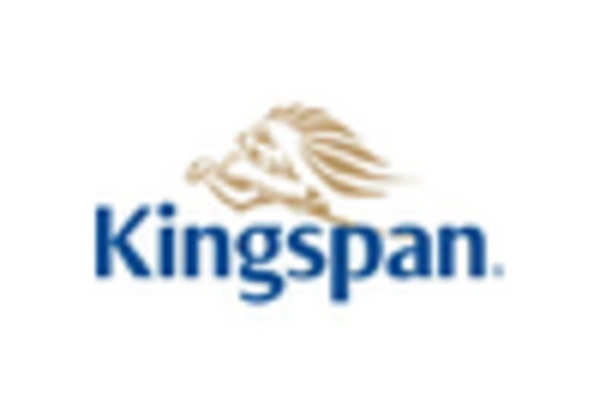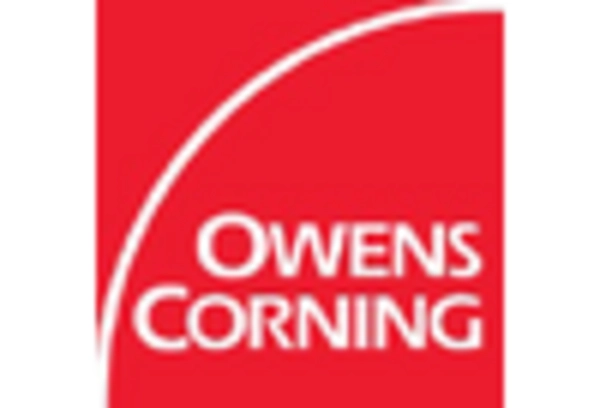Expansion of Cold Chain Logistics
The expansion of cold chain logistics is a critical driver for the refrigeration insulation-materials market. As the demand for perishable goods continues to rise, the need for efficient cold storage and transportation solutions becomes increasingly vital. The cold chain logistics sector is projected to grow at a CAGR of approximately 15% over the next few years, necessitating the use of high-quality insulation materials to maintain optimal temperatures during transit. This growth is particularly relevant in the food and pharmaceutical industries, where temperature control is essential for product integrity. Insulation materials play a crucial role in minimizing thermal losses, thereby ensuring that products remain within specified temperature ranges. As the cold chain logistics industry evolves, the refrigeration insulation-materials market is likely to benefit from increased investments in advanced insulation technologies that enhance the efficiency and reliability of cold storage systems.
Rising Demand for Energy Efficiency
This market is experiencing a notable surge in demand driven by the increasing emphasis on energy efficiency across various sectors. As businesses and consumers alike seek to reduce energy consumption, the need for high-performance insulation materials becomes paramount. According to recent data, energy-efficient refrigeration systems can reduce energy costs by up to 30%. This trend is particularly evident in commercial refrigeration applications, where the adoption of advanced insulation materials can lead to significant operational savings. Consequently, manufacturers are focusing on developing innovative insulation solutions that not only meet energy efficiency standards but also enhance overall system performance. The growing awareness of energy conservation is likely to propel the refrigeration insulation-materials market forward, as stakeholders prioritize investments in technologies that align with sustainability goals.
Regulatory Pressures and Compliance Standards
Regulatory pressures and compliance standards are pivotal factors shaping the refrigeration insulation-materials market. As governments implement stricter regulations regarding energy efficiency and environmental impact, manufacturers are required to adapt their products accordingly. Compliance with standards such as the Energy Star program and various building codes necessitates the use of high-performance insulation materials that meet specific criteria. This regulatory landscape is driving innovation within the market, as companies invest in research and development to create insulation solutions that not only comply with existing regulations but also anticipate future requirements. The need for compliance is particularly pronounced in commercial and industrial applications, where non-compliance can result in significant financial penalties. As such, the refrigeration insulation-materials market is likely to experience growth as manufacturers respond to these regulatory challenges by enhancing their product offerings.
Increased Focus on Environmental Sustainability
The refrigeration insulation-materials market is increasingly influenced by the growing focus on environmental sustainability. As regulatory bodies and consumers push for greener practices, manufacturers are compelled to adopt eco-friendly materials and production processes. The shift towards sustainable insulation materials, such as those derived from renewable resources, is gaining momentum. For example, bio-based insulation materials are emerging as viable alternatives to traditional petroleum-based products, offering comparable performance with a lower environmental impact. This trend is further supported by government initiatives aimed at promoting sustainable building practices and reducing carbon footprints. As the demand for environmentally responsible products rises, the refrigeration insulation-materials market is likely to see a significant transformation, with an emphasis on sustainability becoming a key differentiator among manufacturers.
Technological Innovations in Insulation Materials
Technological innovations are reshaping the refrigeration insulation-materials market, as manufacturers strive to develop materials that offer superior thermal performance and durability. Recent advancements in material science have led to the introduction of new insulation products that exhibit enhanced properties, such as improved thermal resistance and reduced weight. For instance, the development of aerogel-based insulation materials has gained traction due to their exceptional insulating capabilities, which can reduce energy losses by up to 50%. These innovations not only contribute to energy savings but also align with the growing demand for lightweight and space-efficient solutions in refrigeration applications. As technology continues to evolve, the refrigeration insulation-materials market is expected to witness a shift towards more sophisticated insulation solutions that cater to the diverse needs of end-users, thereby driving market growth.

















Leave a Comment